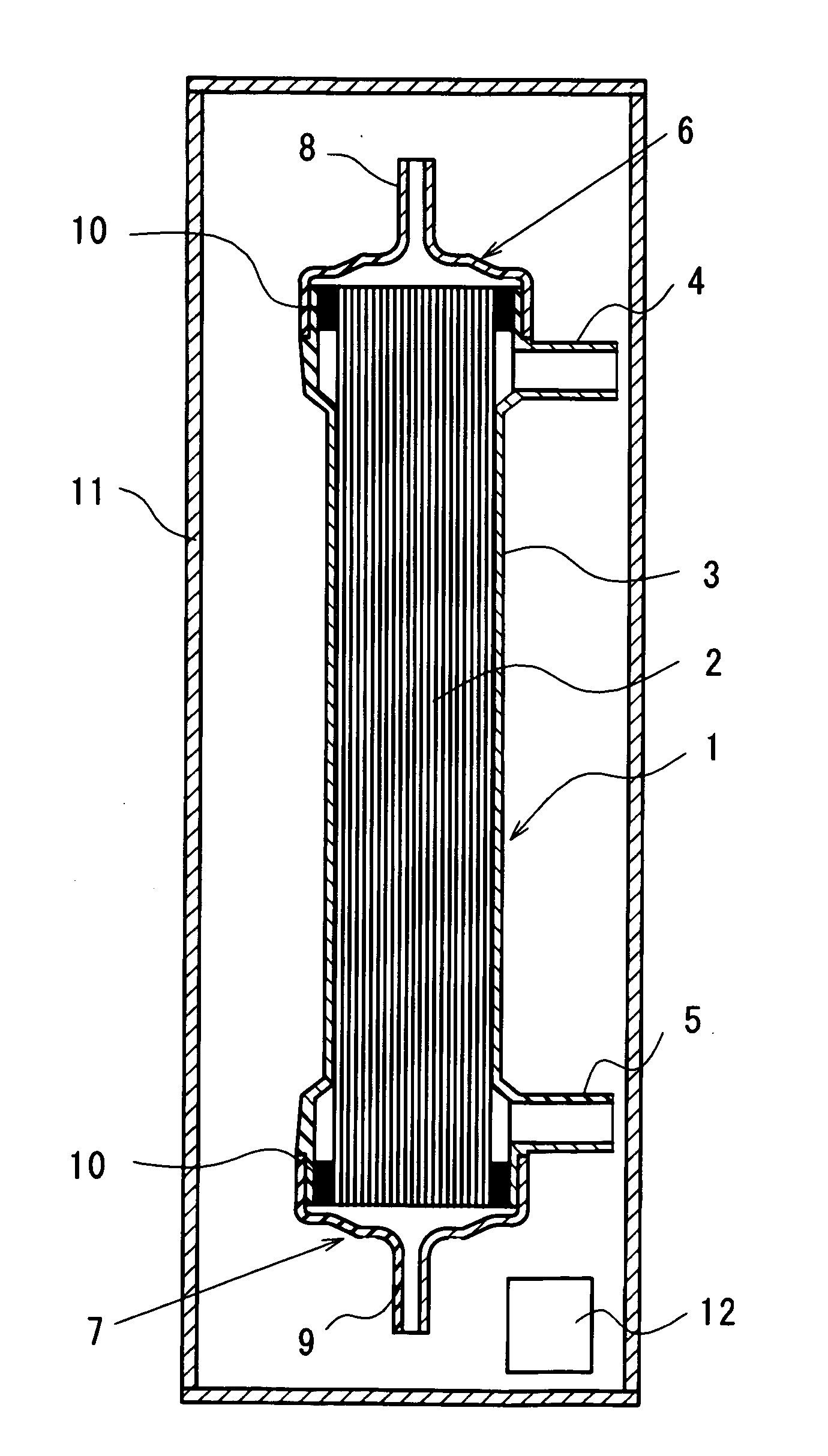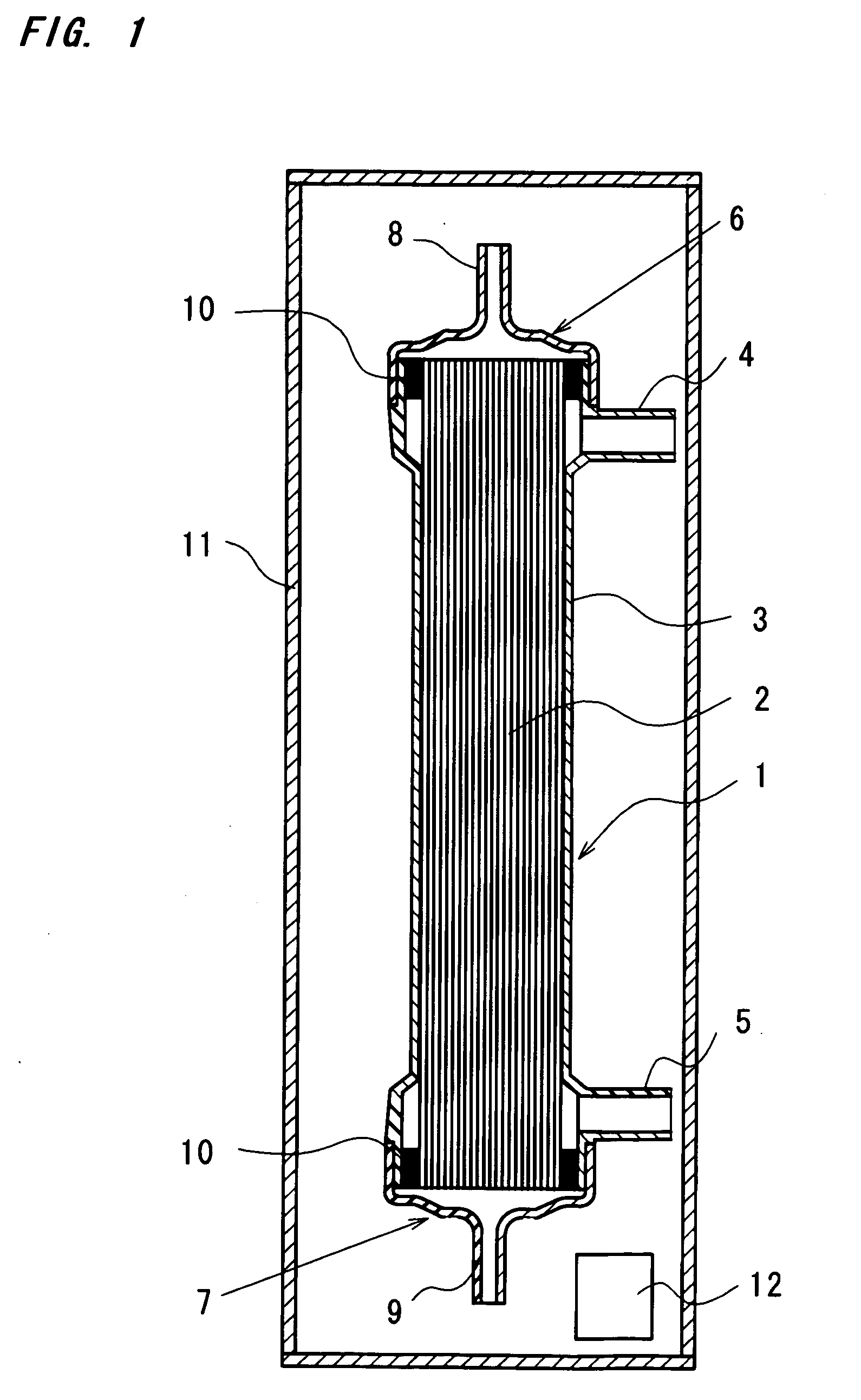Hollow fiber blood-processing device and method for packaging and sterilizing such devices
a blood-processing device and hollow fiber technology, which is applied in the direction of disinfection, other medical devices, membrane technology, etc., can solve the problems of increasing the extraction rate of hollow fiber extractables, failing to meet the above criterion measures, and the arrangement of radiation sterilization. , to achieve the effect of improving the shelf life of the blood-processing device and significantly reducing the extraction rate of hollow fibers
- Summary
- Abstract
- Description
- Claims
- Application Information
AI Technical Summary
Benefits of technology
Problems solved by technology
Method used
Image
Examples
example 1
Using hollow fibers made of polyethersulfone containing PVP with an internal diameter of 200 μm and a film thickness of 30 μm, there are prepared hollow fiber blood-processing devices by bundling 9600 pieces of hollow fibers to form a hollow fiber bundle, inserting the hollow fiber bundle into a cylindrical container of polycarbonate, injecting a polyurethane potting material into both ends of the cylindrical container to seal the both ends thereof, cutting away some parts of the hollow fiber bundle from both ends thereof together with extra potting materials to allow the hollow fibers to be opened at both ends thereof, and mounting headers on both ends of the container to complete the hollow fiber blood-processing device of a dry type. The blood-processing device is placed into a container made of a gas-impermeable material, i.e., a laminated film of polyester / aluminum / polyethylene together with an oxygen absorber, SANSOCUT (Trademark, Nittetsu Fine Products, Co. Ltd.). After seal...
PUM
| Property | Measurement | Unit |
|---|---|---|
| length | aaaaa | aaaaa |
| volume | aaaaa | aaaaa |
| temperature | aaaaa | aaaaa |
Abstract
Description
Claims
Application Information
 Login to View More
Login to View More - R&D
- Intellectual Property
- Life Sciences
- Materials
- Tech Scout
- Unparalleled Data Quality
- Higher Quality Content
- 60% Fewer Hallucinations
Browse by: Latest US Patents, China's latest patents, Technical Efficacy Thesaurus, Application Domain, Technology Topic, Popular Technical Reports.
© 2025 PatSnap. All rights reserved.Legal|Privacy policy|Modern Slavery Act Transparency Statement|Sitemap|About US| Contact US: help@patsnap.com


